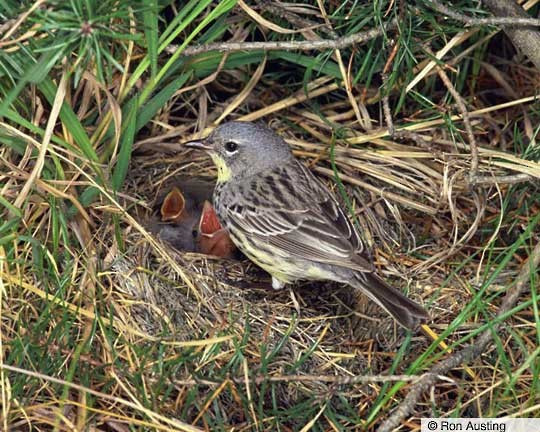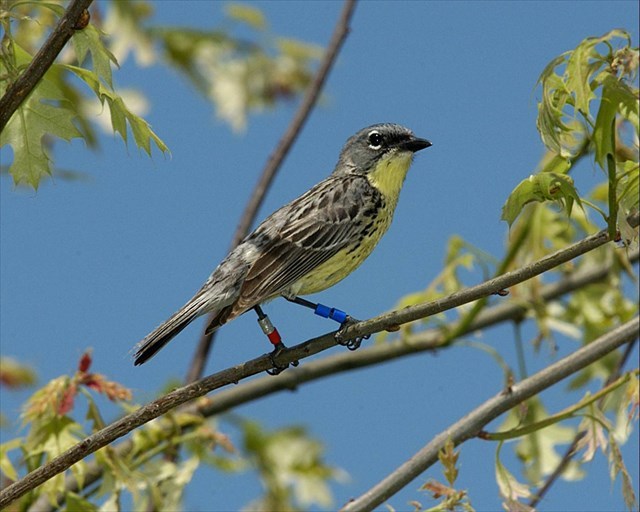Welcome to the Kirtland's Warbler GeoTrail (KWGT). This trail will take you in a loop in central Northern Michigan through the Jack Pine ecosystem, breeding home of the Kirtland's Warbler. This tour takes you to a total of 25 caches with an amazing trackable geocoin as a reward. The KWGT Passport can be downloaded here: https://f81c572e-1d95-4026-befc-8c60f69cbcd9.filesusr.com/ugd/31e003_41b2f3aa918442e8b08c880e746e6946.pdf

Female Kirtland's Warbler at the nest.

Male Kirtland's Warbler. Photo by Ron Austing
The Kirtland's Warbler (Setophaga kirtlandii) is one of the rarest songbirds in North America. They primarily breed in the northern Lower Peninsula of Michigan, and winter in The Bahamas. They were first discovered in 1851 when a specimen was taken near Cleveland, OH. In the winter, Kirtland's reside in thick, low broad-leafed scrub called coppice, eating fruit and insects. The majority of Kirtland's leave their wintering grounds in The Bahamas in late-April and reach the breeding grounds in mid to late-May, with females arriving a few days after the males. Kirtland's nest on the ground in loose colonies in dense, young Jack Pines with scattered grassy openings. After the summer breeding season, most Kirtland's Warblers head back to The Bahamas in September.
There are two main limiting factors on the breeding grounds, habitat and Brown-headed Cowbird parasitism. In The Bahamas, development is causing habitat loss.
Cache
The cache is in trees created by the 1987 Refuge Burn. I have walked through these trees many times over the years while doing the Kirtland’s Warbler Census. The photo of the male Kirtland’s was taken in Oscoda County, MI. The bird was banded on southern Eleuthera, The Bahamas. A colleague and I recaptured that same bird a few days before the photo was taken in a net set up next to the very oak the bird is perched in.